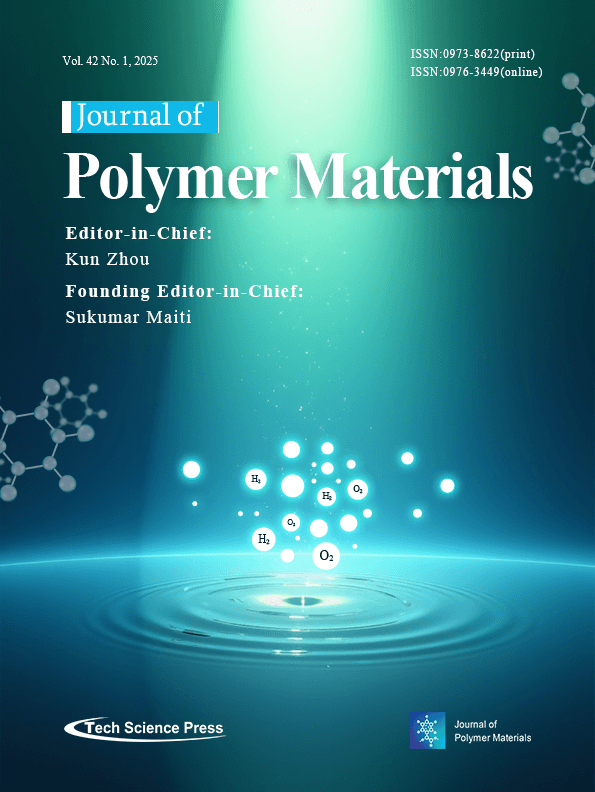Preparation of PVA/SA Interpenetrating Double Network Municipal Sludge Hydrogel and the Study of pH Response
Yu Huang1,3, Tingting Dong1, Xing Zhang1, Shasha Xu2, Xiaoyu Song2, Zhaojun Wang2, Mingyan Qin1, Liwei Deng1, Yalin Li1,2,*
Journal of Polymer Materials, Vol.42, No.1, pp. 151-172, 2025, DOI:10.32604/jpm.2025.060699
- 27 March 2025
Abstract The rapid urbanization underscores the urgency of efficient treatment and resource utilization of municipal sludge for environmental conservation. To address this, a novel pH-responsive dual network polyvinyl alcohol/sodium alginate sludge hydrogel was devised by integrating municipal sludge with acrylic acid monomers, ammonium persulphate initiator, N, N’-methylene bisacrylamide crosslinking agent, reinforced by polyvinyl alcohol and sodium alginate through free radical cross-linking polymerization. The hydrogel’s optimal formulation was identified by adjusting the monomer, crosslinking agent, and initiator dosage while assessing its swelling behavior across various pH environments. Results revealed excellent swelling capacity, notably exhibiting a remarkable swelling More >
Graphic Abstract
